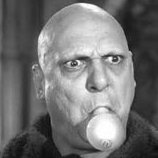Problem With Mitsubishi Water Pump
-
Recently Browsing 0 members
- No registered users viewing this page.
-
Topics
-
Popular Contributors
-
Latest posts...
-
17
Certifying my passport,(for bank proof of life)JP or similar Jomtiem areaJP
They are aware I am in.Thailand, thanks tho -
19
Crime American Arrested in Pattaya for Attempting to Exchange Fake US Dollars
The “for motion picture use only” thing suggests he might have known. -
47
How is Ao Nang now for retirement?
Pet friendly decides where we stay, so very limited choices. -
245
Crime Drunken Foreign Tourists Assault Thai Woman, Locals Step In with Brutal Response
true, but they almost killed the guy. -
4,895
-
10
US Social Security Direct Deposit is late
OK, then I'm in the same boat as your wife... It's not JUST me. 😉 I'll relax and wait. Thanks for your input, buddy!- 1
-

-
-
Popular in The Pub
-









.thumb.jpg.bc523c85a8d558dbc282dca7a2e602c9.jpg)


Recommended Posts
Create an account or sign in to comment
You need to be a member in order to leave a comment
Create an account
Sign up for a new account in our community. It's easy!
Register a new accountSign in
Already have an account? Sign in here.
Sign In Now